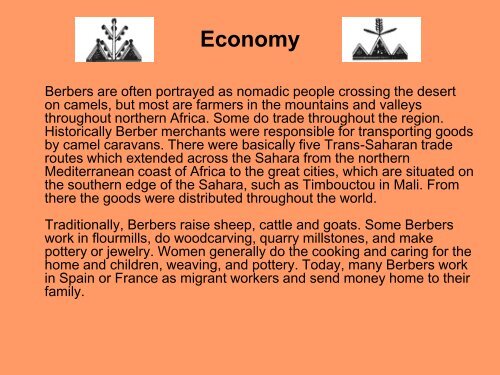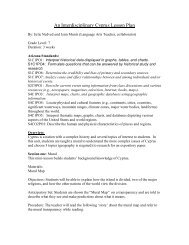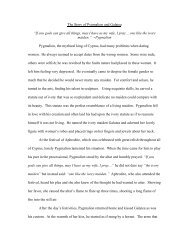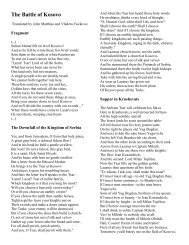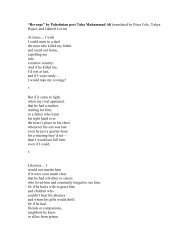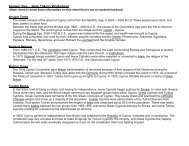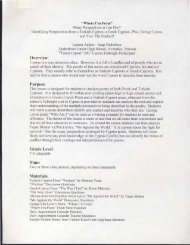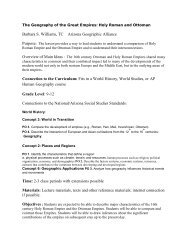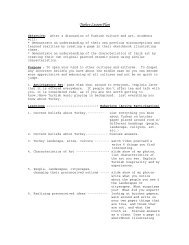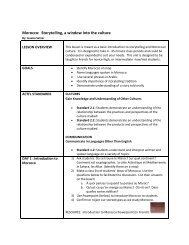The Berbers of Morocco - The Center for Middle Eastern Studies
The Berbers of Morocco - The Center for Middle Eastern Studies
The Berbers of Morocco - The Center for Middle Eastern Studies
Create successful ePaper yourself
Turn your PDF publications into a flip-book with our unique Google optimized e-Paper software.
Economy<br />
<strong>Berbers</strong> are <strong>of</strong>ten portrayed as nomadic people crossing the desert<br />
on camels, but most are farmers in the mountains and valleys<br />
throughout northern Africa. Some do trade throughout the region.<br />
Historically Berber merchants were responsible <strong>for</strong> transporting goods<br />
by camel caravans. <strong>The</strong>re were basically five Trans-Saharan trade<br />
routes which extended across the Sahara from the northern<br />
Mediterranean coast <strong>of</strong> Africa to the great cities, which are situated on<br />
the southern edge <strong>of</strong> the Sahara, such as Timbouctou in Mali. From<br />
there the goods were distributed throughout the world.<br />
Traditionally, <strong>Berbers</strong> raise sheep, cattle and goats. Some <strong>Berbers</strong><br />
work in flourmills, do woodcarving, quarry millstones, and make<br />
pottery or jewelry. Women generally do the cooking and caring <strong>for</strong> the<br />
home and children, weaving, and pottery. Today, many <strong>Berbers</strong> work<br />
in Spain or France as migrant workers and send money home to their<br />
family.


